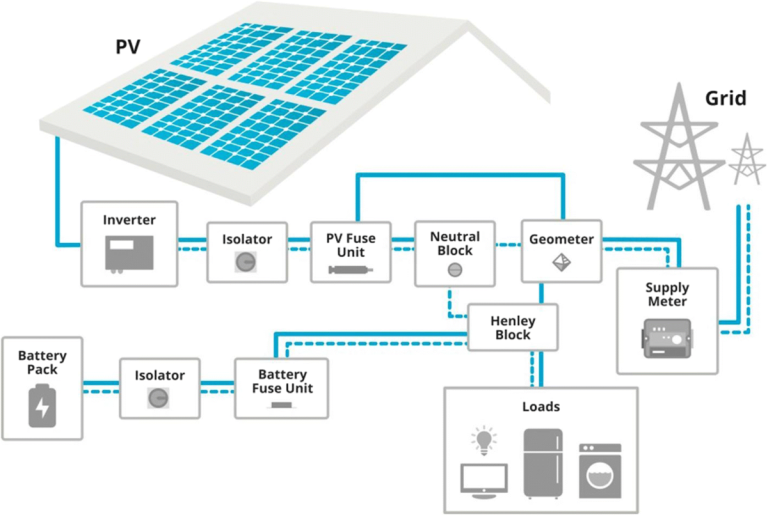Introduction
Lithium-ion batteries have become a cornerstone in modern energy storage, revolutionizing how we power devices, vehicles, and even entire grids. Their high energy density, long cycle life, and efficiency have made them the preferred choice across various applications. This article explores the transformative impact of lithium-ion batteries on energy storage, their advantages, challenges, and the future trends shaping their development.

The Evolution of Lithium-Ion Batteries
Early Development
The concept of lithium-ion batteries dates back to the 1970s when researchers began exploring lithium’s potential as an energy storage material. The first commercial lithium-ion battery was introduced by Sony in 1991, marking a significant milestone in battery technology.
Technological Advancements
Since their inception, lithium-ion batteries have undergone numerous advancements. Improvements in materials, battery chemistry, and manufacturing processes have enhanced their performance, safety, and cost-effectiveness.
Expanding Applications
Initially used in portable electronics, lithium-ion batteries have expanded into various sectors, including automotive, renewable energy storage, and grid stabilization. Their versatility and efficiency continue to drive their adoption across new and emerging applications.
Advantages of Lithium-Ion Batteries
High Energy Density
Lithium-ion batteries have a high energy density, allowing them to store more energy in a compact size. This is crucial for applications where space and weight are limited, such as in smartphones, laptops, and electric vehicles.
Long Cycle Life
These batteries offer a long cycle life, meaning they can undergo numerous charge and discharge cycles without significant capacity loss. This durability is essential for applications that require reliable, long-term energy storage.
Efficiency
Lithium-ion batteries boast high efficiency, with minimal energy loss during charging and discharging. This efficiency translates to better performance and lower operating costs for users.
Low Self-Discharge
Lithium-ion batteries have a low self-discharge rate, meaning they retain their charge for extended periods when not in use. This characteristic is particularly beneficial for backup power and emergency applications.
Transforming Energy Storage Applications
Consumer Electronics
Lithium-ion batteries are the backbone of modern consumer electronics, powering devices such as smartphones, tablets, laptops, and wearables. Their high energy density and long cycle life ensure that these devices remain lightweight, portable, and efficient.
Electric Vehicles
The automotive industry has embraced lithium-ion batteries as the primary power source for electric vehicles (EVs) and hybrid electric vehicles (HEVs). These batteries provide the necessary range, power, and fast-charging capabilities to make EVs a viable alternative to traditional internal combustion engine vehicles.
Renewable Energy Storage
Lithium-ion batteries play a critical role in renewable energy storage, enabling the integration of solar and wind power into the grid. They store excess energy generated during peak production times and release it when demand is high, ensuring a stable and reliable energy supply.
Grid Stabilization
Lithium-ion batteries are used for grid stabilization, helping to balance supply and demand and prevent power outages. They provide rapid response times and can discharge energy quickly, making them ideal for frequency regulation and peak shaving.
Challenges Facing Lithium-Ion Batteries
Cost
Despite declining prices, lithium-ion batteries remain relatively expensive compared to other energy storage options. The high cost can be a barrier to widespread adoption, particularly in large-scale applications such as grid storage.
Raw Material Supply
The production of lithium-ion batteries relies on critical raw materials such as lithium, cobalt, and nickel. Limited supply and geopolitical factors can impact the availability and cost of these materials, posing challenges for the battery industry.
Safety Concerns
Lithium-ion batteries are susceptible to thermal runaway, a condition where overheating can lead to fires or explosions. Ensuring safety requires robust battery management systems and stringent manufacturing standards.
Recycling and Disposal
Recycling lithium-ion batteries is complex and costly, and improper disposal can lead to environmental hazards. Developing efficient recycling processes and encouraging sustainable practices are crucial for mitigating these issues.
Future Trends in Lithium-Ion Battery Development
Solid-State Batteries
Solid-state batteries, which use a solid electrolyte instead of a liquid one, are seen as the next significant advancement in battery technology. They promise higher energy densities, improved safety, and longer lifespans, potentially overcoming many of the limitations of traditional lithium-ion batteries.
Enhanced Battery Chemistry
Ongoing research aims to improve lithium-ion battery chemistry, focusing on increasing energy density, reducing costs, and enhancing safety. Innovations such as silicon anodes, lithium-sulfur batteries, and lithium-air batteries are being explored.
Advanced Manufacturing Techniques
Advancements in manufacturing techniques, such as 3D printing and automation, are expected to reduce production costs and improve the quality of lithium-ion batteries. These techniques can lead to more efficient and scalable battery production.
Second-Life Applications
As lithium-ion batteries reach the end of their useful life in primary applications, they can be repurposed for secondary uses such as stationary energy storage. This approach maximizes the value extracted from batteries and supports sustainability.
Integration with Renewable Energy
The integration of lithium-ion batteries with renewable energy sources is a growing trend. By coupling batteries with solar panels and wind turbines, it is possible to create more resilient and sustainable energy systems.
Conclusion
Lithium-ion batteries have transformed the landscape of energy storage, offering high energy density, efficiency, and versatility across a wide range of applications. From powering consumer electronics and electric vehicles to enabling renewable energy integration and grid stabilization, their impact is profound and far-reaching. While challenges such as cost, raw material supply, and safety concerns remain, ongoing advancements and innovations are paving the way for even greater performance and sustainability. As the world continues to prioritize clean energy and sustainability, lithium-ion batteries will play a crucial role in shaping the future of energy storage.

